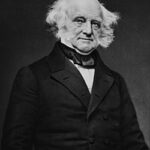President Martin Van Buren faced a critical test of Aroostook War diplomacy in early 1839. Maine and New Brunswick militias mobilized over disputed territory along the Aroostook River. Both sides prepared for battle as tensions escalated rapidly. ⚠️ The situation threatened to ignite a full-scale war between the United States and Britain.
Van Buren’s Diplomatic Strategy
Van Buren chose negotiation over military action despite immense pressure. He deployed General Winfield Scott as his special envoy rather than reinforcing Maine’s militia. Scott’s mission focused on de-escalating tensions through careful dialogue. The president understood that war would devastate the recovering American economy.
General Scott’s Peace Mission
Scott arrived in Maine in March 1839 with clear diplomatic instructions. He negotiated directly with British authorities and local militia leaders. 📊 Within weeks, both sides agreed to withdraw their forces from contested areas. The general’s calm approach prevented bloodshed and established temporary boundaries. Van Buren’s restraint demonstrated presidential wisdom during a volatile crisis.
Impact:
Van Buren’s Aroostook War diplomacy created lasting positive consequences for American foreign policy. The peaceful resolution avoided a costly war that would have strained federal resources. 💰 The decision saved millions in military expenditures during an economic recession. His approach also strengthened America’s reputation as a mature nation capable of peaceful conflict resolution.
Foundation for Future Treaties
The diplomatic success paved the way for the Webster-Ashburton Treaty of 1842. This comprehensive agreement permanently settled the Maine-New Brunswick border dispute. 🌍 The treaty established important precedents for future Anglo-American negotiations. Van Buren’s restraint proved that complex territorial disputes could be resolved without warfare.
Long-term Constitutional Significance
Van Buren’s handling of the crisis strengthened presidential authority in foreign affairs. He demonstrated how executive leadership could override state militarism for national interests. 🔥 His decision prevented potential constitutional conflicts between federal and state military powers. Historians praise this episode as exemplifying presidential wisdom and diplomatic maturity. The peaceful resolution became a model for future territorial disputes throughout American expansion.
